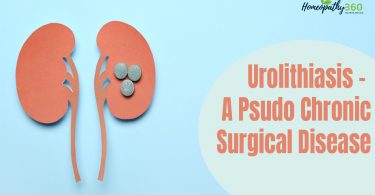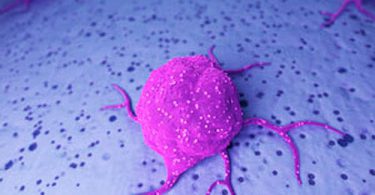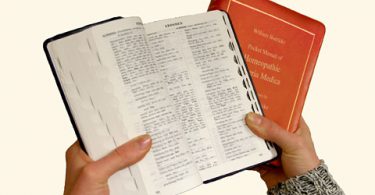Introduction
I found the following reference Lectures on the Theory and Practice of Homoeopathy, R.E. Dudgeon, B.Jain Publishers (P) Ltd, Lecture VI, Isopathic, pages 141-175, which I quote below as very useful.
The advent of Hahnemann’s theory of the miasms caused great interest in the chronic diseases and their anti-miasmatic remedies. One of the direct consequences of the publication of The Chronic Diseases was the development of the use of miasmic organisms as potentized homeopathic
remedies. The earliest experiments with nosodes were carried out by Constantine Hering while he was in Surinam, Guiana, and South America between 1827 and 1833. In the five years Hering spent studying plant and animal species, he paid special attention to the virulent snake and spider poisons as well as miasmic substances. This was the time period when
Hering captured the Bushmaster snake that supplied the first venom for the proving of Lachesis.
In 1832 Hering said: ‘During the experiments on the serpent poison, I have
given out the idea that the hydrophobic virus should be a powerful pathological agent. I presented the same hypotheses regarding the virus of variola (smallpox). I expect no less as regards the psoric virus, and I invited my colleagues to make provings.’ It seems that shortly after Hahnemann published his chronic disease theory, Hering performed the first proving of Psorinum on himself. Hering originated the method of using a miasmic agent as a basis for a remedy and it was he who coined the term ‘nosode’. The Greek word ‘Noso‘ is a prefix which is added to give the idea of a disease indicating its morbid root. This term is also connected with the Latin word ‘noxa’, the root of the term noxious or damaged. This implies the use of potentially dangerous noxious materials as a basis for a potentized remedy.
Hering is responsible for greatly expanding the materia medica of homoeopathy and adding seven new categories of potentized remedies. At the same time, he was one of the true defenders of the four cardinal
rules of homeopathy: Similars cure similars, the single remedy, the minimal
dose and the potentized remedy. Hering’s uses of idem in homeopathy includes:
1. The use of poisons taken from insects, snakes, and other venomous creatures (Animal poisons).
2. The use of remedies made from miasmas (Nosodes).
3. The introduction of potentized miasmas and morbid secretions taken directly from the patient’s body (Autonosodes).
4. The use of homologous organs, tissues and secretions (Sarcodes).
5. The use of potentized miasmic products as nosodes for the prevention of infectious diseases (Nosode prophylaxis).
6. The use of chemical and nutritional elements innate to the human organism (Chemical and elemental relationships).
7. The use of potentized genus groups as curative and preventative remedies for individuals, groups and habitats. Hering suggests potentized seed of weeds or dangerous plants to eradicate and destroy those plants and potentized insects or animals to remove and prevent infestations of dangerous species (Isodes).
Hering continued to experiment with nosodes of acute and chronic
miasms and invited others to conduct provings. He recommended the
use of potentized watery excrements of cholera, the black vomit of yellow
fever, the desquamated skin of malignant scarlet fever, to bind bags of
milk sugar in contact with the skin of typhus patients, the use of leucorrheal
matter, etc., as well as psorine (Psorinum), gleet-matter (Medorrhinum),
pthisine (Tuberculinum) and syphiline (Syphilinum). Many ancient isopathic
remedies were introduced into the homeopathic materia medica by dedicated homeopaths of the ninteenth century. Constantine Hering, W. Gross, Wilhelm Lux, Father Collet, Swan and Burnett immediately come to mind.
After Hering’s introduction of the nosodes, Johann Joseph Wilhelm Lux,
a well known homeopathic veterinarian, began to conduct experiments
with the isopathic use of disease materials in potencies. In December,
1831, Lux was asked if he knew any homeopathic remedies for the treatment of bovine plague and anthrax.
Lux replied that he could not suggest any remedies off hand but he offered
the following suggestion. He told the person to take a drop of blood of an
animal infected with anthrax, and a drop of the nasal mucus of a cow with
the plague, and prepare a 30c potency of the material. During the epidemic in 1832, many veterinarians relied on the complementary use of the nosodes and standard remedies to treat the animals under their care.
On December 24, 1835, Jolly of Constantinople reported to Hahnemann
that Russian doctors had cured a number of cases of bubonic plague
with a 30c nosode prepared from the serous exudation of plague buboes.
Hahnemann was interested in the new nosode movement on the basis
of these clinical experiences but he was concerned because most of these
nosodes were not being proved. So in this way the revolutionary ideas
contained within the 1828 edition of The Chronic Diseases changed the way people thought about contagious disease and stimulated the integration of nosodes into the homeopathic pharmacopoeia.
Dr David Little in his interesting article mentions some of the best indication
of nosodes:
Indication of Nosodes
1. The first and most important indication is to prescribe nosode as a
constitutional homeopathic remedy by comparing the symptoms of the patients with the proved symptoms in materia medica. An example of this would be the use of Tuberculinum Bovinum Kent
Constantly changing symptoms
Increase and decrease suddenly
Tendency to take cold
Weakness and emaciation
Combustion, burn the candle at two sides
Hyperactive, always discontented
Constant desire for changes – travels, jobs, relations, etc.
Malicious, destructive, difficult children
Romantic
Something with cats – fear,disgust or allergy
Fear of dogs, animals
Headache as from iron band,every 7 or 14 days
Long eyelashes
Hair growing on the back
Bald spots in beard
Blue sclera
Perforation tympanum
Boils in nose
Enlarged adenoids–tonsils
Frequent colds, bronchitis,asthma, pneumonias
Chronic cough with emaciation
The symptoms above confirm both the miasmic diagnosis and the
simillimum.
2. The second indication is when well chosen remedies do not hold
the case for a long time. This is usually caused by the miasmatic block.
3. The indication is when there is paucity of symptoms. There are
times when there are very few symptoms by which to prescribe. These are often one-sided cases where a strong inherited or acquired miasm has repressed the ability of the constitution to show symptoms. Other than the signs related to the pathology of one or another of the miasms, the symptoms in these cases are not very characteristic of any chronic remedies. This may be a chronic state caused by a miasmic dyscrasia. In Kent’s lecture Dr Kent mentions under Tuberculinum: ‘It seems from looking over the record of many cures that this remedy has been given many times for just that state on a paucity of symptoms, and if the records can be believed, it has many times balanced up to the constitution in that anemic state, where the inheritance has been phthisis.’
4. The fourth indication when a person suffers from specific dyscrasia of a particular disease that is, never well since syndrome, for example, Typhoidinum in a person who has a history of typhoids from which they have never recovered. Perhaps a new layer of disease has been added to their constitution by a suppressed typhoid that changed their constitution. Another example would be a person who suffers from gonorrhea and gets it suppressed with penicillin injections, the gonorrhea is better but not fully better with lingering of discharge from the urethra, memory weakness, lack of stamina, etc. Such patients may require a dose of Medorrhinum.
5. The fifth indication is when a distorted image of a constitutional remedy is present yet not one remedy completely fits the case. This pattern is quite diagnostic of nosode as a remedy.
6. The sixth indication when fundamental or dominating miasms obstruct
the efficient functioning of a constitutional remedy for example, after several months of good improvement the patient begins to relapse with the same symptoms, and to one’s great surprise, the same constitutional remedy no longer works. Although there is no change of symptoms calling
for a new remedy, the old remedy has become completely ineffective.
7. The seventh indication is to use nosodes as genus epidemicus. for example, use of Meningococcinum in an epidemic of meningitis.
8. The eighth indication is to use nosodes as prophylaxis to prevent specific infectious diseases. The best historical example is of Boenninghausen’s prescription of the remedy Variolinum to prevent smallpox.
9. Nosodes may also be used as a method to protect children from
the malefic action of parental or hereditary miasms. Dr Kent stated
in his Lectures on Homoeopathic Materia Medica: ‘If Tuberculinum
bovinum be given in 10M, 50M, CM potencies, two doses of each
potency, at long intervals, all children and young people who have
inherited tuberculosis may be immuned from their inheritance and their resiliency will be restored.’
10. The tenth indication of using a nosode is as a homeopathic remedy
made from the patient’s own disease substance. This is called the auto-nosode or isodes. This method has not been used by me so far but I am sure it may help patients when nothing else seems to work. Hahnemann once had a patient suffering from phthisis that was not responding to well
chosen remedies. This led him to prepare an auto-nosode made
from the saliva of the patient. Auto- nosodes have been made from
sputum, blood, urine, pus, leucorrhea, exudates from skin eruptions,
and microbes from cultures of the patient, etc.
Tetanotoxinum
This is a useful remedy in my practice when the person has a problem related to the jaw. The jaw bone is painful and the person has difficulty in opening and closing the mouth or when the person suffers from temporo-mandibular arthritis came to me after consulting different doctors in Bombay. She was unable to open and close the mouth and the
movement of the jaw was extremely painful.
I tried remedies based on symptom similarity like Causticum and Rhus toxicodendron without much relief. But after giving one dose of Tetanotoxinum 30c she improved and most of the symptoms disappeared.
Diphtherotoxinum
In this condition I use the remedy very frequently if there are not enough good symptoms to prescribe a deep acting constitutional remedy, one dose
of 30c potency reduces the pain and discomfort easily.
I learnt a lot about this nosode from a case of a girl who had malalignment
of the jaw bone due to severe spasm of the masseter muscle. She This remedy was introduced to me by Dr Didier Grandgeorge of France. I
use this remedy in cases where there is a history of recurrent sore throat, recurrent laryngitis or recurrent pharyngitis, especially in children who have
been vaccinated by DTP vaccine. The characteristic symptom that I look forward to is pain in the throat, worse cold air.
Diphtherinum
I use this remedy in cases of sinusitis where the discharge is thick, yellow
in color; there is nasal obstruction along with sore throat. The person has
a constant desire to draw cold air in the throat with strong craving for cold
drinks. The cervical glands are swollen. There is a lot of mucus in the throat, red discoloration of the tongue and offensive
salivation.
Another indication of this remedy is when the indicated remedy does not
work or in an obstinate case of tonsillitis.
Pertussinum
It is commonly called as Coqueluchinum. In the most obstinate cases of
croup and viral laryngitis, I have used this remedy. When the person complains of sudden, dry, hacking, spasmodic cough; the cough comes suddenly, it is so forceful that the whole body of the person jerks while he is
coughing. The head moves forward and the knees move upwards. Also, it is one of the most useful remedies in children when they have a lingering cough with a strong tubercular background like a family history or past history of tuberculosis. Another indication is when the person is suffering from primary complex and he has low grade fever, his appetite is low, he is emaciating and there is a lingering cough.
Sarcodes
Insulinum
Apart from its use in diabetes I use this remedy in acne, carbuncles and
eczema.
Uricum acidum
Uricum acidum is also an important sarcode in my practice. I use this remedy in cases where there is an eczema or unhealthy skin.
I also use this remedy in cases of lipoma. Also helpful where there are a
lot of arthritic nodosities as in a case of heberden nodes in patients suffering from osteoarthritis of the finger joints. Sometimes I have also used this remedy in chronic insomnia in heart disease.





